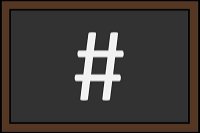
Life on the Hyphen Trivia Quiz
Punctuation & Typographical Symbols
Throughout history, typographical symbols have popped up to serve differing purposes in the publishing world. Can you identify these various symbols, both common and uncommon?
by trident.
Estimated time: 3 mins.











